Average sizes and life expectancy for this breed:
Originating from the Sahel region of the Sahara Desert, the Azawakh is an elegant and proud guardian, canine companion, and hunter. They are named after the Azawakh valley in the Sahara.
Known to be affectionate and gentle, Azawakhs are also protective of their families and properties. They are known to be aloof and standoffish toward people they don’t know and dislike being touched or petted by strangers. Breed enthusiasts portray them as a fascinating combination of independence and loyalty.
Azawakhs are sighthounds so they are attracted by motion and inclined to run after animals, people on skateboards, and bicycles. They have even been known to run after kids. For this reason, the muscular and lean Azawakhs can be excellent companions for runners and joggers. At home, they like to find a nice spot to relax and snooze.
These independent dogs are best suited to homes with secure, large-fenced gardens where they can freely run around and let off some energy. Azawakhs need at least an hour of daily exercise or play. Keep in mind that they can get cold easily because of their short hair and low body fat. So, you may need to cover them in a sweater before going outdoors during the winter season.
See available puppies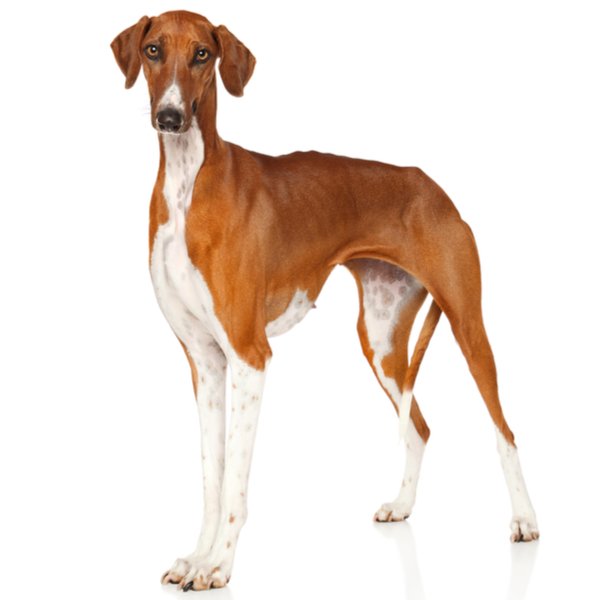

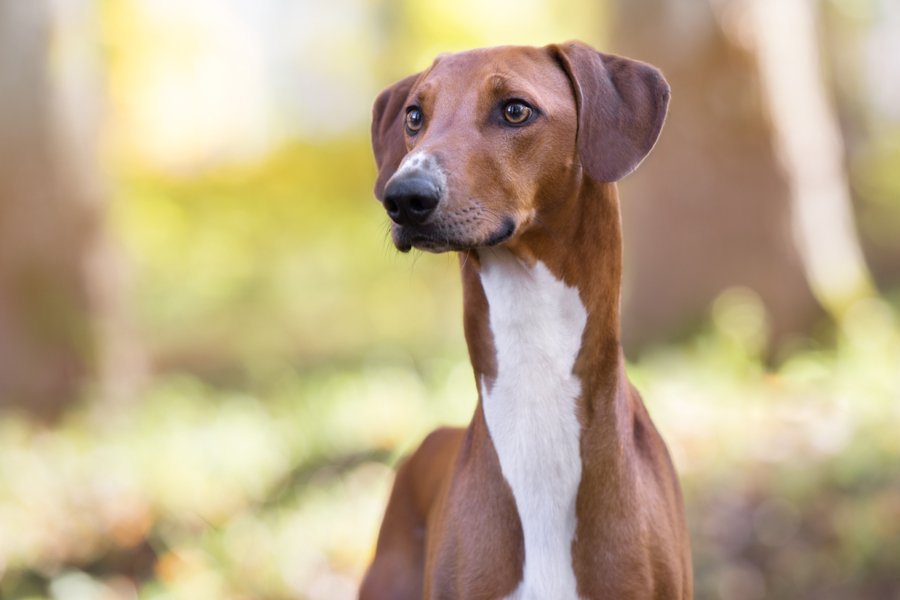


The Azawakh is known to have originated from the West African Sahara Desert. Bred primarily to guard the livestock of their ever-moving owners, the Tuareg people, these protective dogs were also recognised for their hunting skills and companionship. Because of how they are built, these dogs are well-adapted to living in the harsh conditions of the desert.
They were named after the Azawakh Valley that lies in between the Mali and Niger desert. Azawakh translates to ‘Land of the North’.
In the 1970s, a Yugoslavian Diplomat was given a male Azawakh from the nomadic people he established a relationship with. He also bargained to have a female Azawakh as well. These two dogs were believed to be the first dogs of the breed to be exported to Europe.
Over the following years, Azawakhs were exported by French civil servants and military forces based in the region, with a total of seven imports between 1972 and 1978. The Azawakh we know today is thought to be a cross between these two lines.
Azawakhs look very similar to Greyhounds. However, they are more closely related to the Sloughi, another African Sighthound, and Salukis. When they were first exported, they were referred to as Sloughi-Azawakhs. But in 1980, they were recognised and named solely as Azawakhs.
This breed was first recognised by the French Kennel Club in 1979 and by the UK Kennel Club in 1993. However, they weren't recognised by the American Kennel Club until 2019. These beautiful, majestic dogs are still rare around the world today and are very sensitive to cold climates. So, this needs to be taken into consideration if you are considering adding an Azawakh to your family.
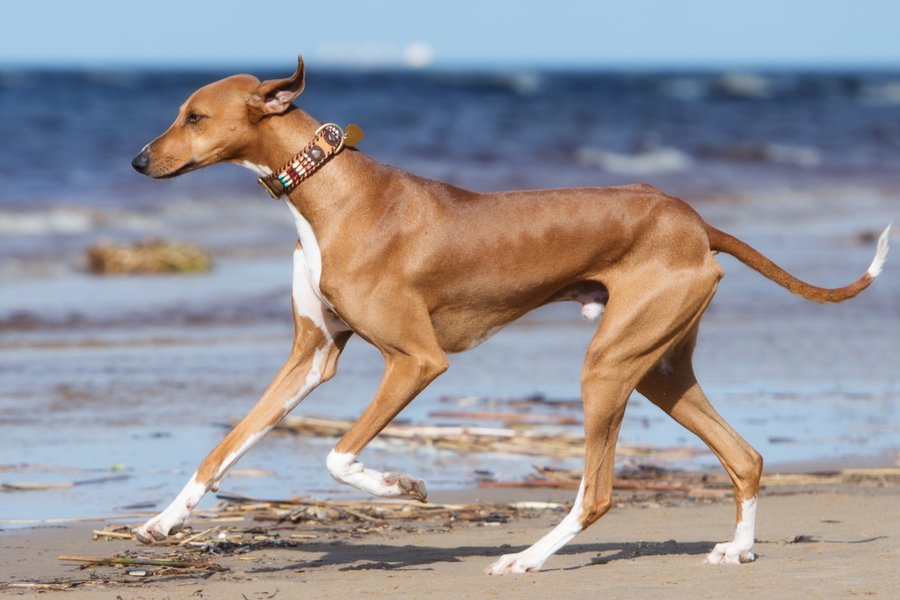
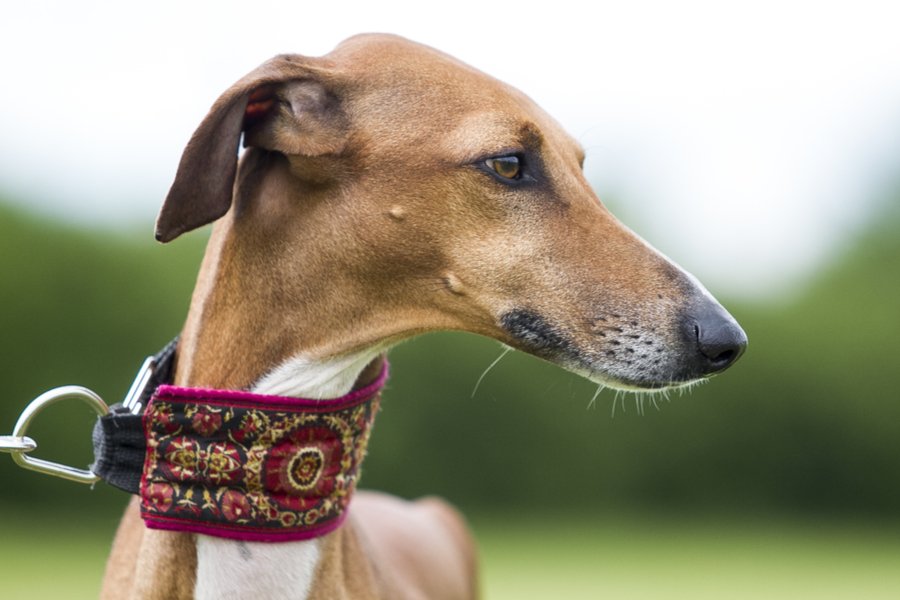
These magnificent dogs are tall and lean with an exquisite appearance. Azawakhs are leggy and sophisticated. They exude a general impression of great virtue and finesse. Their musculature and bone structure are visible beneath their delicate skin.
Azawakhs have long, lean, and chiseled skulls with flat cheeks. Their eyes are almond-shaped and can either be dark or amber in colour. Their ears are fine, triangular, and set high on the head.
These dogs have long, lean shoulders that slant slightly. Their forelegs are straight and set well under the body. When it comes to their hind legs, Azawakhs have long, lean thighs and prominent hip bones. Their tails are slim and tapered. They are usually carried just above the level of the back but shouldn’t be raised too high. A white tip on the tail is preferred under the UK breed standard.
Their short coat is smooth and comes in many colours such as dark red, clear sand, and brindle. These dogs can come with or without a black mask or white blaze. The paws must have some white hairs present, but the white shouldn’t reach the hocks or elbows.
Known for their intelligence, affection, and remarkable loyalty to their families, the Azawakh is also considered to be proudly independent. Because of this, they are probably not ideal for first-time dog owners. They have unique personalities that may require specific training.
Azawakhs can become very protective of their families and their territory, especially when they feel threatened. Be mindful of their reaction towards strangers because it can vary. These dogs were bred to be protectors, so it is an innate part of their personality.
These loyal canine companions need early and proper socialisation. They also require constant positive reinforcement training, especially around people they don’t know. This will help to calm their natural weariness. Azawakhs are pack animals, so they love being in the company of other Azawakhs. It is not unusual for Azawakh owners to have more than one dog of this breed. These dogs usually form very close bonds with their family members too.
Azawakhs have a high prey drive. So, while they can potentially get on well with cats and other animals, it is highly recommended that you introduce them gradually and in a controlled manner to ensure that their first encounter is pleasant and smooth. These dogs are not suitable for households with smaller pets such as rabbits because they can trigger the hunting instinct in these dogs. When out and about, owners need to ensure they achieve a solid recall command because these dogs will happily dash off if they see a running animal. They should never be allowed to walk outdoors off-leash until they are fully trained to do so.
Similar to some sighthounds, Azawakhs can be described as speedy couch potatoes. They can run, play, and exercise with their human companion to release some of their energy. But at the end of the day, they’ll be happy to lounge around and doze off on the couch.
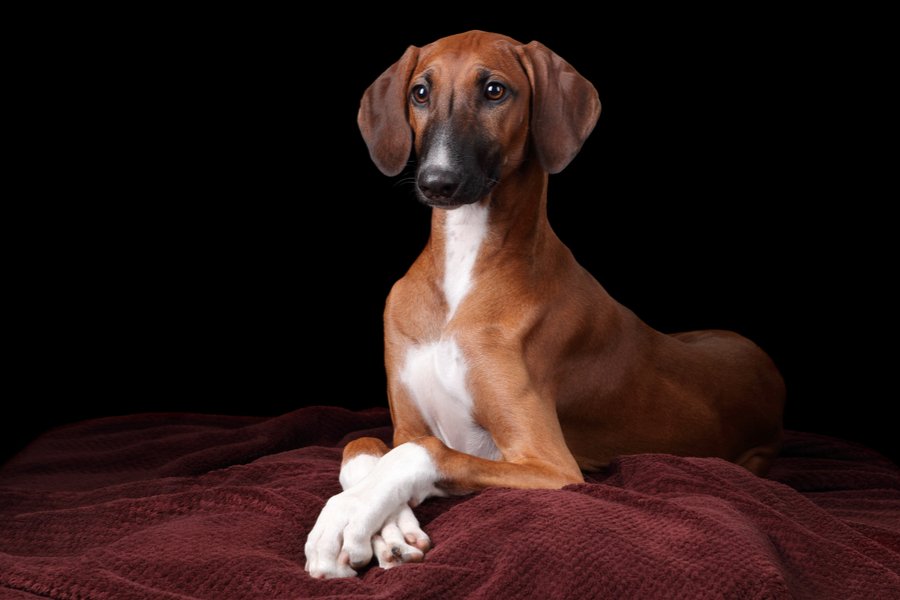
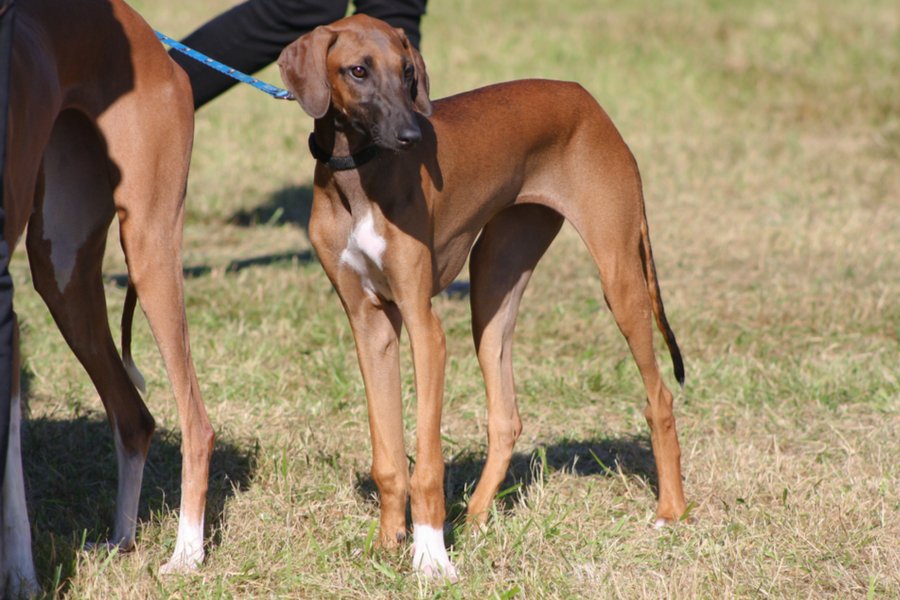
Similar to most sighthounds, Azawakhs are clever and learn quickly. Use positive reinforcement methods such as food rewards and praise to encourage them to participate in training sessions. Remember, harsh or heavy-handed training methods will not work with this independent and proud dog breed.
This dog breed can get pretty sensitive and timid at times, even though they are naturally strong-willed and independent. Make sure you show them that you are the pack leader but remember to incorporate respect training. Lay down your rules, be consistent, and make sure that they are being followed in a kind manner. Harsh training and punishment can cause your Azawakh to become fearful or withdrawn. With the right owners, an Azawakh can thrive as a beloved canine companion.
Start their training as early as puppyhood. If you can enroll them in puppy obedience classes, then this is a great start. Don’t wait for them to turn six months old, as they can be more headstrong at this age! Ideally, when Azawakh puppies are about ten to twelve weeks old, enroll them in puppy classes and socialize them constantly, including with family and friends.
Azawakhs are low maintenance in the grooming department. Their grooming needs consist of a rub down once a week with a chamois and a firm bristle brush to keep it healthy, shiny, and in good condition. These dogs have minimal body fat and a thin coat, so they do not like the cold. For this reason, make sure to keep them warm during the winter months, especially when outdoors.
Regularly check their ears for debris, dirt, and excessive wax. You can clean their outer ears with a moistened cotton ball and an ear cleanser advised by your vet. If you detect any foul smell, soreness, inflammation, swelling, or they continuously shake or scratch their head and ears, discuss it with your veterinarian for a quick checkup because these may be signs of an infection.
Daily brushing is still best to prevent tooth and gum diseases and bad breath. But brushing at least twice a week is enough to remove any tartar and bacteria accumulation. Take advice from your veterinarian on which dental products perform best to effectively clean their teeth, tongue, gums, and mouth.
Trim their nails roughly once a month to keep them clean and tidy. This is especially important if your dog doesn’t wear their nails down naturally. Long nails can cause walking difficulties and pain.
Moreover, regularly check their body over for any signs of infection, illness, or injury. These can include open wounds, inflammations, and rashes. Their eyes should be clear and clean with no redness or discharge.
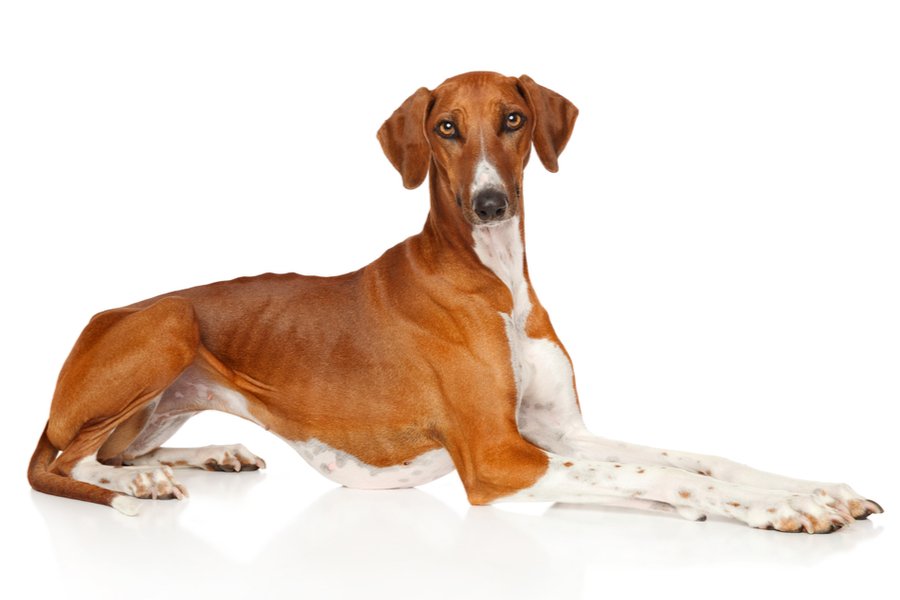
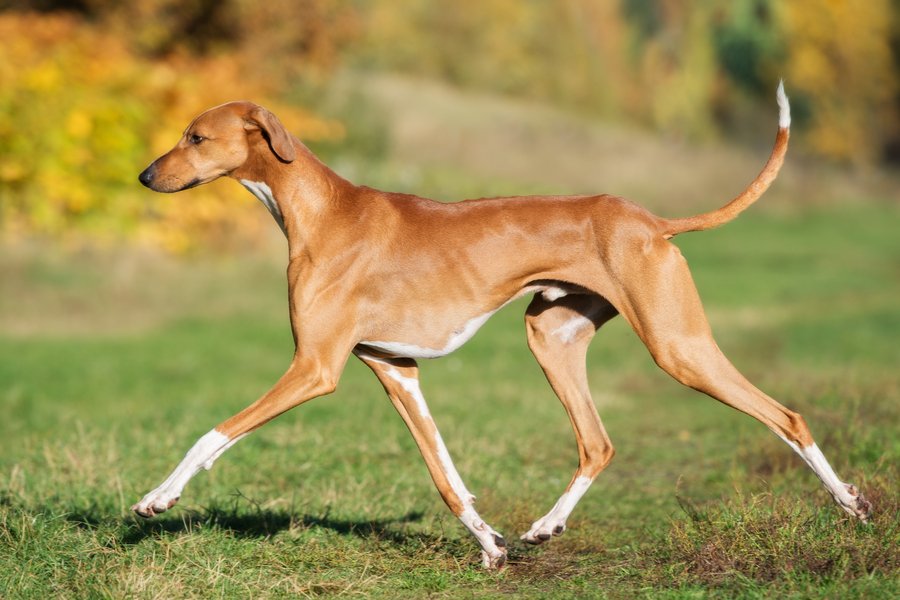
An Azawakh’s average life expectancy is 12-15 years if they are correctly cared for and provided with a high-quality diet that matches their age and needs.
Azawakhs are generally a healthy and strong breed. However, they have a small gene pool, so they are susceptible to developing certain health conditions. Make sure to find a licensed breeder that performs health tests on the parents and puppies to reduce the chance of puppies developing any hereditary conditions. These are some of the health conditions they are known for:
Furthermore, it's important to bear in mind that Azawakhs can be sensitive to anaesthesia. So, express your concerns with a veterinarian before committing to any surgical procedure.
With the right owners, Azawakhs can make excellent canine companions. They are intelligent, affectionate, and friendly. They also love spending plenty of time with their human companions. While they can be gentle and loving, they are not a match for families with young children because of their naturally aloof natures. Moreover, they don’t do well with families that are not home for long periods. These dogs thrive on companionship, whether from a two-legged or a four-legged companion.
Azawakhs can thrive in a multi-dog household, but they like to be the dominant dog. However, this trait can be tamed with consistent training. These dogs are not suitable for homes with smaller pets because of their strong prey drives.
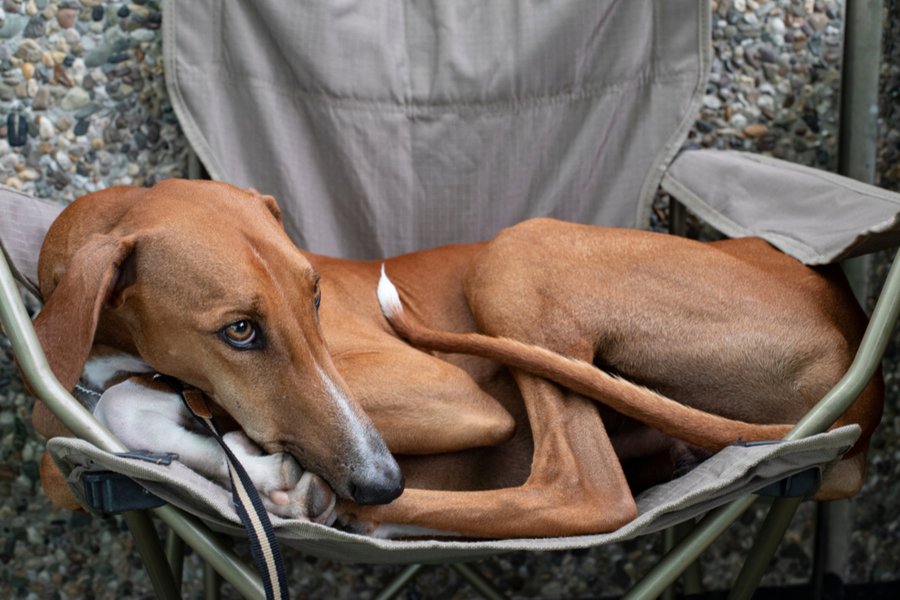

We can connect you with Breeders that are specialized in this particular breed.
See available puppies

Need some advice?
Whether you're a first time pet owner, an experienced pet owner, a new or long-time breeder, or just curious about pets, we've got you covered!

January 17, 2024
What Is The Personality Of Russian Blue Cats?
Russian Blue cats are most known for their distinctive shimmery blue-silver coat and piercing green eyes. However, this breed’s calm and gentle temperament is what makes them shine the most in the feline world.

January 17, 2024
10 Facts About Russian Blue Cat Breed
Russian Blues are one of the most aesthetically stunning cat breeds, with a gorgeous plush silvery coat and vibrant green eyes. However, it’s not only their appearance that is beautiful; their nature is too.

January 17, 2024
How To Choose The Right Cat Breed for You
Cats can make the most fantastic animal companions; they are adorable, friendly, and loving. However, not all felines are created equal. There are many different breeds, of which each has its unique personality traits.
Need some help?
Contact us to speak to our friendly advisor, who will gladly help you find your dream pet!



We are registered in England and Wales under registration number 12568840,
and our registered office is at 58-60 Kensington Church Street, W8 4DB London, England.
© 2023 The Pedigree Paws